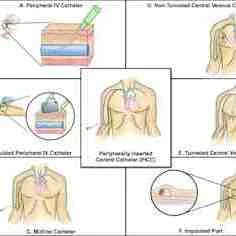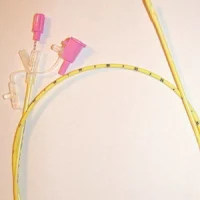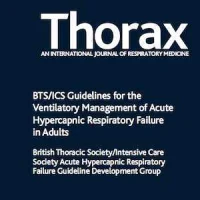An international panel of experts has released the first comprehensive guide to using intravenous, or vascular access, devices of all kinds. The Michigan Appropriateness Guide for Intravenous Catheters, or MAGIC, is published as a supplement in Annals of Internal Medicine.
Use of peripherally inserted central catheters (PICCs) has become popular for venous access in hospital settings but their use can result in important complications, such as thrombosis and infection.
 "The easiest way to prevent these complications is not to place a PICC in the first place. So we set out to determine when the use of a PICC is appropriate, and when other choices are the best,” says lead author Vineet Chopra, MD, MSc (pictured), assistant professor of internal medicine, University of Michigan Medical School. He has studied risks from PICCs for years.
"The easiest way to prevent these complications is not to place a PICC in the first place. So we set out to determine when the use of a PICC is appropriate, and when other choices are the best,” says lead author Vineet Chopra, MD, MSc (pictured), assistant professor of internal medicine, University of Michigan Medical School. He has studied risks from PICCs for years.
Dr. Chopra and his team organised and conducted a multidisciplinary meeting of international experts to develop appropriateness criteria for use, care, and management of PICCs and related venous access devices. Following the RAND/UCLA Appropriateness Method, the panel conducted systematic reviews of the literature and created scenarios related to PICC use, care, and maintenance based on patient population, indication for insertion, and duration of use. For each scenario, appropriateness of PICC use was compared with that of other venous access devices.
MAGIC gives clinicians an easy-to-use framework to pick the right device for each adult patient. The guide provides colour-coded charts or algorithms to indicate which devices are appropriate or inappropriate in each case.
"From inception to the final product, it took over two years to develop MAGIC," Dr. Chopra told ICU Management. "We spent many days looking for the 'right' panellists, who brought both content expertise and the ability to work together as a team."
The panel of 15 experts included doctors and nurses from a wide range of fields where PICCs and other such devices are commonly used, from vascular nursing, anaesthesiology and radiology, to critical care, hospital medicine, infectious disease and oncology. Also participating: a patient who had suffered complications from various IV devices, and still lives with the consequences.
To help promote the use of MAGIC, the research team plans to create laminated pocket cards that will be available to all providers. "Ultimately our goal is that these will be included within EMRs as physician decision-aids or as clinical guides, but this will depend on the individual hospital," Dr. Chopra told ICU Management.
The team has also launched a comprehensive website, improvepicc.com, that offers one-stop access to the MAGIC recommendations. The site also provides updates on issues and research related to PICCs, central lines and other vascular access issues.
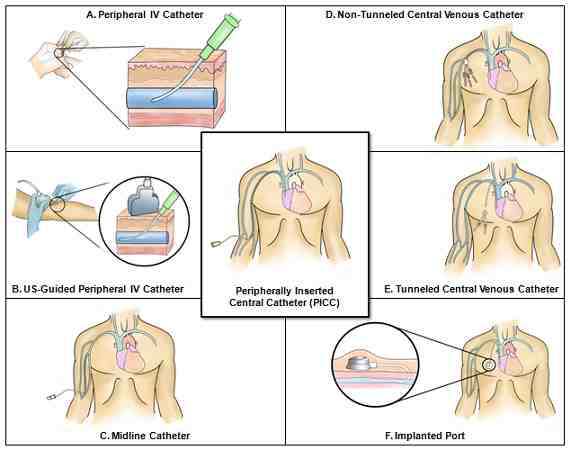
Figure 1. A chart showing different types of intravenous (vascular access) devices.
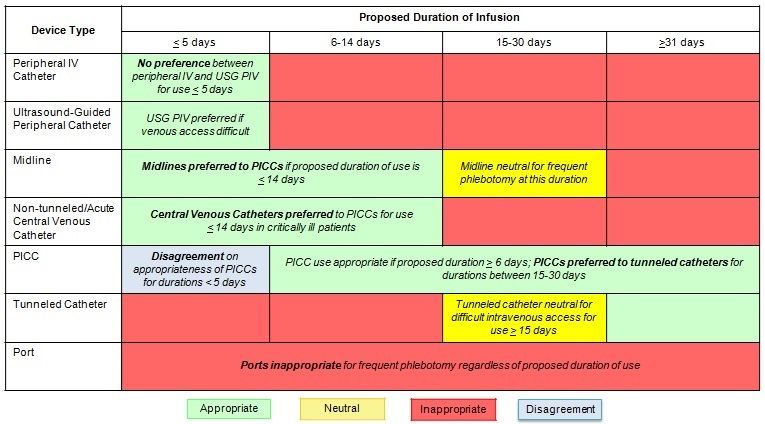
Figure 2. Venous access device appropriateness ratings for general hospitalised patients who require frequent phlebotomy
Source and image credit: University of Michigan Health System
Use of peripherally inserted central catheters (PICCs) has become popular for venous access in hospital settings but their use can result in important complications, such as thrombosis and infection.
 "The easiest way to prevent these complications is not to place a PICC in the first place. So we set out to determine when the use of a PICC is appropriate, and when other choices are the best,” says lead author Vineet Chopra, MD, MSc (pictured), assistant professor of internal medicine, University of Michigan Medical School. He has studied risks from PICCs for years.
"The easiest way to prevent these complications is not to place a PICC in the first place. So we set out to determine when the use of a PICC is appropriate, and when other choices are the best,” says lead author Vineet Chopra, MD, MSc (pictured), assistant professor of internal medicine, University of Michigan Medical School. He has studied risks from PICCs for years.Dr. Chopra and his team organised and conducted a multidisciplinary meeting of international experts to develop appropriateness criteria for use, care, and management of PICCs and related venous access devices. Following the RAND/UCLA Appropriateness Method, the panel conducted systematic reviews of the literature and created scenarios related to PICC use, care, and maintenance based on patient population, indication for insertion, and duration of use. For each scenario, appropriateness of PICC use was compared with that of other venous access devices.
MAGIC gives clinicians an easy-to-use framework to pick the right device for each adult patient. The guide provides colour-coded charts or algorithms to indicate which devices are appropriate or inappropriate in each case.
"From inception to the final product, it took over two years to develop MAGIC," Dr. Chopra told ICU Management. "We spent many days looking for the 'right' panellists, who brought both content expertise and the ability to work together as a team."
The panel of 15 experts included doctors and nurses from a wide range of fields where PICCs and other such devices are commonly used, from vascular nursing, anaesthesiology and radiology, to critical care, hospital medicine, infectious disease and oncology. Also participating: a patient who had suffered complications from various IV devices, and still lives with the consequences.
To help promote the use of MAGIC, the research team plans to create laminated pocket cards that will be available to all providers. "Ultimately our goal is that these will be included within EMRs as physician decision-aids or as clinical guides, but this will depend on the individual hospital," Dr. Chopra told ICU Management.
The team has also launched a comprehensive website, improvepicc.com, that offers one-stop access to the MAGIC recommendations. The site also provides updates on issues and research related to PICCs, central lines and other vascular access issues.

Figure 1. A chart showing different types of intravenous (vascular access) devices.

Figure 2. Venous access device appropriateness ratings for general hospitalised patients who require frequent phlebotomy
Source and image credit: University of Michigan Health System
References:
Chopra V et al. (2015) The Michigan Appropriateness Guide for Intravenous Catheters (MAGIC): Results From a Multispecialty Panel Using the RAND/UCLA Appropriateness Method. Ann Intern Med. 15 September
2015;163(6_Supplement):S1-S40. doi: 10.7326/M15-0744
Latest Articles
healthmanagement, catheter, vascular access, guidelines, University of Michigan Health System
An international panel of experts has released the first comprehensive guide to using intravenous, or vascular access, devices of all kinds. The Michigan Appropriateness Guide for Intravenous Catheters, or MAGIC, is published as a supplement in Annals of





